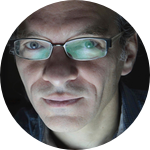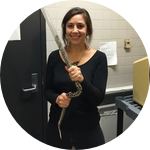About This Project
Some South American opossums have a blood protein (vWF) which has evolved resistance to snake venom. Our lab examines how three venom proteins interact and evolve with vWF. However, necessary data for one of these proteins, Aspercetin, are lacking. This project aims to sequence Aspercetin and obtain the crystal structure of vWF complexed with Aspercetin, to understand how this protein has evolved to target vWF, and how opossums have co-evolved to combat its deadly function.
Ask the Scientists
Join The DiscussionWhat is the context of this research?
Evolution shapes proteins. However, understanding exactly how processes of evolution work on proteins requires detailed knowledge of the intricacies of protein sequence, structure, and the kinetics/physics of their interactions. This project will uncover the protein sequence and structure of the interaction between the venom protein Aspercetin, and its mammalian target vWF. This research will be placed in the larger context of understanding how vWF in certain mammals (opossums) have evolved resistance to Aspercetin and other similar venom proteins. While our lab has gathered kinetic interaction data for several venom proteins’ interacting with vWF, structure and sequence data are required to help use these data to pinpoint how each amino acid influences function.
What is the significance of this project?
The proximate significance of this work will be to uncover the sequence and structural interaction of a venom protein (Aspercetin) from Bothrops asper, a snake which is the leading cause of snakebite in several regions of Central and South America. The ultimate significancet of this work is to examine how evolution changes proteins over time. Opossum vWF has evolved resistance to venom proteins, but how? Which parts of vWF must change for a mammal to become resistant—many small changes or one or two big ones? Does this change occur gradually or all at once? By applying the sequence and structural data gathered here to our larger research program examining the evolution of resistance to venom in mammals, we hope to address some of these seminal questions.
What are the goals of the project?
We will use mass spectroscopy to obtain the protein sequence of Aspercetin (purified by Dr. Alexandra Rucavado). We will then express recombinant vWF in-vitro to subsequently complex with Aspercetin. This sample will be sent to our collaborating lab to screen for crystal growth conditions by undergraduate researchers who will learn crystallography methods via this work, overseen by Dr. Robert Evans. Crystal data will be phased and a structure resolved by Dr Evans. Downstream analysis of Aspercetin in context of the evolution of venom resistance in mammals will be done by Danielle Drabeck (PhD student). These funds will pay for the sequencing services and consumables associated with that, as well as crystallography work.
Budget
SDS gels are used to separate Aspercetin into its component subunits. Protein sequencing will be done at the University of Minnesota Proteomics Center. Recombinant vWF will be prepared by Danielle Drabeck (PhD student), and subsequently combined with Aspercetin that has been purified and shipped from Dr. Alexandra Rucavado at Instituto Clodomiro Picado, Universidad de Costa Rica. Dr. Robert Evans will do the crystallography with the help of undergraduate researchers, and in collaboration with the Kahlert Structural Biology Laboratory.
Funding to make recombinant vWF, as well as placing these data in the context of the larger project describing venom protein interactions with vWF has been provided by: the society for the Study of Evolution, the American Society of Mammalogists, the American Society of Ichthyologists and Herpetologists, The Minnesota Herpetological Society, The Dayton Bell Museum Fund, and the University of Minnesota Grant in Aid program.
Endorsed by
 Project Timeline
Project Timeline
vWF is being prepared now (February 2018), and Aspercetin has also been received from Costa Rica. As soon as we secure funding we will be able to run proteins out on a gel and extract for sequencing. We will also be able to immediately complex vWF and Aspercetin to send for crystallography work.
Feb 12, 2018
Project Launched
Feb 15, 2018
Make and purify vWF A1
Feb 15, 2018
Send Aspercetin to sequence
Feb 19, 2018
Begin screening crystal conditions
Apr 16, 2018
Send crystals to structural biology lab to obtain structure
Meet the Team
Affiliates
Team Bio
Danielle Drabeck is an Interdisciplinary Doctoral Fellow at UMN. Robert Evans is postdoctoral fellow in structural biology (UMN). Alexandra Rucavado is a senior professor who specializes in immunology and pathophysiology of snake venom. The members of this team have very different skills, expertise, and backgrounds! Their collaboration is facilitated by support for multidisciplinary work at the University of Minnesota and the Instituto Clodomiro Picado.
Danielle Drabeck
I am an evolutionary biologist interested mainly in the process of adaptive evolution in the context of coevolutionary systems. I use diverse methods to study these phenomena, including evolutionary biochemistry, biophysics, and phylogenetics. I am particularly interested in how adaptive coevolution can be understood at the molecular, functional, and phenotypic level. I am currently a PhD candidate in the University of Minnesota’s graduate program in Ecology, Evolution, and Behavior co-advised by Dr. Sharon Jansa and Dr. Antony Dean.
Though the study of coevolutionary relationships has been a focal point of evolutionary biology, demonstrating a truly reciprocally evolving interaction at the molecular and functional level in an empirical system has remained elusive. My current research focuses on understanding the molecular and functional history of traits involved in an interspecific coevolutionary arms races.
I have studied evolutionary dynamics of several systems including marsh grasses, Diamondback Terrapins, and the Vegas Valley Leopard Toad. My current work focuses on coevolutionary interactions between mammals and venomous snakes.
Additional Information
All methodological components of this project have been well established in our lab and our collaborators', and can be completed in quite a short time frame. Sequence data should be available shortly after submission. While crystallography is always an unknown, methods and conditions for similar venom proteins complexed with vWF have been completed and methodology should be similar to these in a straightforward way.
Project Backers
- 26Backers
- 48%Funded
- $1,099Total Donations
- $42.27Average Donation



